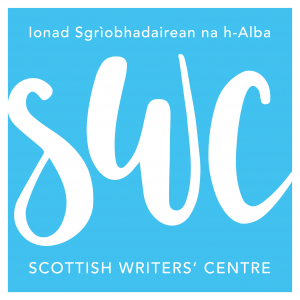Thanks to everyone who attended the highly educational evening with Aonghas MacNeacail, who took us through his life as a pioneer in the resurgence of Gaelic culture.
Aonghas’ first inspiration was a book of poetry by Dylan Thomas, whose sonorous rhythms he suspects were inherited from Thomas’s Welsh-speaking father. This collection was one which Aonghas found during his lunch break, while working as a railway clerk at Glasgow’s St Enoch Station (long since demolished). Every writer’s story is full of chance, and Aonghas’ was no different – and no less fascinating. The schoolteacher who told his mother to obtain for him a Gaelic bible to read, Philip Hobsbaum, also put Aonghas in touch with other young writers (whom he brought together in a formal group). This group met in Hobsbaum’s flat, to discuss – in detail – the writings of its members. Each of those writers would later do great things, such as Alasdair Gray, Liz Lochhead, James Kelman, and Tom Leonard. They also socialised together, meeting in pubs like The Doublet and The Rubayat. Hobsbaum’s previous workshopping groups, in Cambridge and Belfast, had included such aspiring young writers as Ted Hughes, Seamus Heaney, and Bernard MacLaverty, among others.
The Gaelic College in Skye (Sabhal Mòr Ostaig) is now a vibrant reality, but in the 1970s it was a far-fetched pipe dream (merely running summer schools and hosting a Sgrìobhadair – Writer in Residence – of which Aonghas was the third). Today, the language is taught in schools across Scotland and even in colleges as far flung as Bonn, Germany. There is also a lively Gaelic learning community in Seattle, stemming from the pioneering work of poets like Sorley MacLean, Iain Crichton Smith, George Campbell Hay, and Derek Thomson, who helped make Gaelic a living language again. When Aonghas attended school in Skye, the most recent taught Gaelic text dated from 1811. Today, even science fiction books are being written in the language!
It took Aonghas years to begin writing in the Gaelic for which he is now famous: an inspirational teacher at Langside College, Glasgow, introduced him to significant contemporary Gaelic poets. These days he even writes, occasionally, in Scots – inspired, perhaps, by memories of the East Coast Braid Scots dialect, of fisherman who used to visit his family house in Uig, on the Isle of Skye, when he was a child.
As befits the inheritor of a great oral culture, Aonghas’ poetry is often about local characters and craic gathered in pubs; about the lives of people in a more intimate relationship to their landscape and past, than most of us now living in the cities. Such could be found in Aonghas’ reading of fine poems like Meeting Granny and Death of the Piper. This last was about a “builder of unseaworthy boats”, who normally worked as a ganger on road-building projects and who slept inside still-to-be-installed concrete drainage pipes (when he felt rejected by his fellow man). The many of us with family connections to the Highlands and Islands will easily recognise this world from which Aonghas came: of flawed, impossible, loveable, but incorrigible people whose lives were often tinged with tragedy – but who survived in a community, and whose memories and dignities and shared values Aonghas has brought into the brighter present we are lucky to share now.




